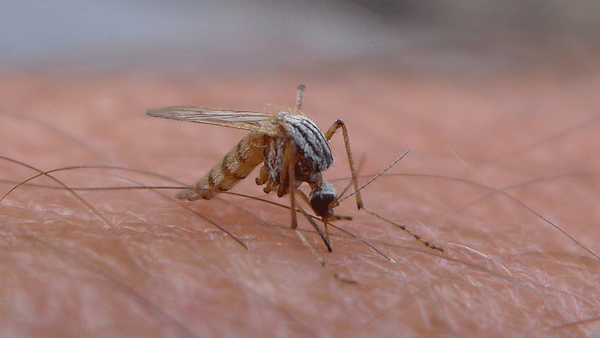
They’re small, pesky and will make an estimated 4 million people sick by the end of this year.
The aedes aegypti mosquito, better known as the blood-sucking culprit behind the Zika Virus, has sent global health officials rushing to understand more about the outbreak that began in Brazil last year and has since spread to 52 countries. And despite the belief that New Yorkers may dodge these bugs if they limit their traveling, the truth is they likely exist in our own backyards right here in the Hudson Valley.
In light of Zika causing global alarm as it reaches a pandemic level, the Latin American & Caribbean Studies Program at SUNY New Paltz presented a roundtable discussion about the virus on Wednesday, April 6. Faculty experts on Latin America, Biology and Women’s, Gender & Sexuality covered three of the largest concerns the virus has caused so far: travel restriction, reproductive justice of women and insect control.
The program kicked off with Benjamin Junge, an Anthropology and Latin American & Caribbean Studies professor who recently returned from a trip to Brazil earlier this year. At the virus’ epicenter, Brazil alone has garnered between 500,000 to 2 million cases of Zika since the outbreak first began last year, Junge said.
The virus itself rarely causes death; 40 percent of people who have it never show symptoms. Those who do experience fever, joint pain, rash and red eyes. By following advertised precautions such as wearing long sleeves and applying insect repellent, Junge returned to the states from Brazil Zika-free.
“One thing I do not want to do is instill panic about travel to Brazil,” Junge said. “If you were planning to go to the Olympics, by all means you should still go. Interest in tourism perpetuates the notion that Rio is a risky place, and there’s a lot of work we have to do to reshape this.”
This sentiment comes as many Americans cancel travel plans in fear of contracting the virus, not only to Brazil but to other affected countries. Brazil is set to host the 2016 Olympic Summer Games from Aug. 5-21 in Rio De Janeiro, where an expected 10,500 athletes from 206 different countries will compete.
The Centers for Disease Control and Prevention (CDC) has issued travel warnings for pregnant women because, as scientists declared just last week, Zika is in fact the long-speculated cause of microcephaly, a condition resulting in abnormal head size and developmental delay in some babies born to mothers with the illness.
Meg O’Sullivan, a professor from the Women’s, Gender and Sexuality program, said there has yet to be an institutional approach to help women in the affected countries aside from telling them to not get pregnant.
“In my estimation, the ways these governments have been paying attention to the outbreak has not been friendly to women and their reproductive justice,” O’Sullivan said. “I don’t think the answer is ‘don’t have kids’ or ‘get an abortion.’ I would like to see more medical research, generally wherein a vaccine could be developed.”
O’Sullivan noted that many Americans bring up the conversation of making abortions legal where they are now not, or starting programs to provide women with birth control who live in areas where it is not readily accessible or affordable. Giving our own suggestions, she said, sometimes do not align with the cultural values of women in those countries.
“I would argue that this burden is being put on women, to simply not get pregnant, because there has been no systematic, governmental approach,” O’Sullivan said. “Birth control would provide an avenue of protection, but some women will still have this want for a child.”
The source of the virus, though miniscule, has spread so rapidly due to the mosquitoes’ ability to live in close proximity with people. Aaron Haselton, chair of the Biology department, explained that even the smallest amounts of stagnant water lying around, such as inside a bottle cap or discarded plastic bag, serves as prime breeding ground for the aedes aegypti mosquito and its cousin the aedes albopictus.
“These two are really insidious vectors that want to bite people,” Haselton said. “Places with poor sanitation and accumulation of water allow them to breed rapidly.”
Both of the species responsible for Zika transmission in the Southern Hemisphere also reside here in the U.S. as north as the Hudson Valley, Haselton said.
“It is not likely that these New York mosquitos carry the virus, but, in theory, if enough people became infected and provided a stable reservoir, transmission could arise,” Haselton said.
Despite the lack of risk in the immediate area, Gov. Andrew Cuomo has appointed a Zika Action Plan for New York State that is stepping up how we should keep the bugs at bay. Both species have been known to exist in New York City for years, and now with increased conversation of the virus, the state is looking to heighten precautions to limit the presence of these insects.
The plan includes distributing larvicide tablets to then place in permanent stagnant water sources like ponds; special monitoring of aedes mosquitoes to identify possible Zika transmission and handing out Zika protection kits to pregnant women that include educational materials, insect repellant, condoms and larvicide tablets.
